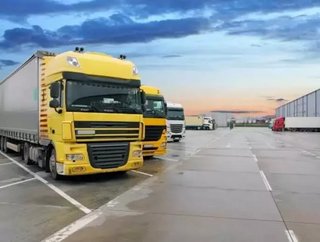Driving Cost out of the First Mile

The value of end to end supply chain visibility is undeniable but for the majority of retail, wholesale, 3PL and manufacturing organisations today, the difference between the first and last mile could not be more stark. The last mile is fast, efficient, effective and transparent; leveraging real time optimisation, mobile devices and the cloud to deliver end to end visibility, enhanced customer service and cost control. The first mile is not optimised, invisible and inherently inefficient. Reliant on spreadsheets and a paper deluge, it is an operational black hole. One supply chain; two fundamentally different standards.
While to date failure to automate this aspect of the supply chain has been justifiable due to concerns regarding cost, difficulty and fear of disruption, next generation cloud based Transportation Management Systems (TMS) change the game. As Craig Sears-Black, Founder, Inolog, explains, with one day implementation, subscription based pricing and Facebook style intuitive interface, organisations can finally start to eliminate significant cost from the first mile and create a truly joined up supply chain.
Stark Contrast
Customer expectations have clearly played a part in the decision to prioritise the transformation of the last mile. The use of route optimisation tools and mobile apps to eradicate paper trails has been essential to achieve the next, even same, day delivery combined with real time tracking customers now demand. Coming hard on the heels of the overhaul within many warehouses and distribution centres, where fully automated centres and picking optimisation have significantly reduced errors and improved productivity, the ‘warehouse to customer’ end of the supply chain is now incredibly efficient. Organisations can deliver great service to customers, and with full visibility at every step of the process, the cost to serve is also well understood and managed.
In contrast, the inbound logistics model remains rooted firmly in the last decade – if not the one before. A combination of the sheer complexity and need to focus on customer experience has led to most organisations shelving any attempts to improve the first mile process. Replacing fixed long term carrier contracts with a more dynamic approach to carrier selection based on business rules has been the domain of the largest shippers and raised the spectre of multi million pound investments, years of upheaval and a significant risk of disruption. In essence: too difficult, too complex and too expensive.
Yet with increasingly economic uncertainty, global currency volatility and escalating competition, this lack of standardisation across the supply chain is becoming a serious operational concern. Not one of the now standard aspects of efficient last mile supply chain operations are being achieved in the first mile. One supply chain; two fundamentally different models.
End to End Risk
In contrast to streamlined last mile and warehouse operations, the inefficiency of the first mile is stark. Where is the control? The cost model management? Or ability to track carrier performance to Key Performance Indicators (KPI) ranging from cost to emissions, on time delivery to order completeness? How can organisations even attempt to address the huge environmental impact and operational cost associated with the empty miles created by running part-loaded trucks along inefficient routes?
Organisations cannot afford this lack of control or visibility. Not only are unnecessary costs being incurred but there are potential knock on effects on the last mile – especially for manufacturing companies and those with long lead times to get goods from the Far East, for example, into UK distribution centres. From potential short orders leading to out of stock situations which affect customer service, to a complete lack of visibility of inbound supplies, inefficient first mile logistics is not only adding cost but risks undermining performance across the rest of the optimised supply chain.
The first mile remains mired in paper. While last mile delivery drivers are armed with mobile apps, electronic information and proof of delivery, plus optimised route, in the first mile, carriers rely on reams of paper documentation that spans driver information and consignment details.
In addition to the errors and inefficiency inherent within this manual process, there is clearly no opportunity for real time tracking; no visibility of carrier performance; and limited insight into stock location. Efficiencies that are a given in one part of the supply chain are not even considered in the other and this lack of standardisation needs to be addressed. Rapid Implementation
With the focus now turning firmly towards squeezing cost out of the business, the onus is on organisations to embrace a far more dynamic, efficient model, using real time visibility to allocate work to the right carrier at the right time, based on criteria ranging from lowest cost to best service and opportunity to minimise empty miles. The key to achieving this transformation is ease and speed of implementation. A cloud based Transportation Management System (TMS) eradicates any need for complex, expensive and disruptive implementation. Combining Facebook style user interfaces to minimise training requirements with a subscription based investment, organisations can embrace an automated approach within days, rather than months or years.
Using this approach an organisation can rapidly deploy a new TMS, set up customers, locations, shipment contracts and carrier contracts – even an inexperienced user can intuitively enter orders and allocate jobs to a carrier. One of the essential components of this solution is the eradication of paper documents. With a simple app downloaded onto each driver’s phone, including GPS tracking and optional signature capture for proof of delivery, the carrier can provide real time shipping information.
As soon as a delivery has been made, the invoice can be automatically generated by the carrier – reducing errors, improving cash flow and removing the need for expensive paper processing. For the organisation, with automatic invoicing matching against purchase orders, only exceptions need to be manually handled – the entire process is slicker and more efficient for both shipper and carrier.
Win Win
This is the key to transforming this complex first mile process and creating an efficient, standardised supply chain - it is a win: win for everyone. The mobile app makes it incredibly easy for the carrier to provide the organisation with the information required – from departure time onwards – and radically reduces the carrier’s data processing costs. For the organisation, this real-time information completely changes the way in which the first mile process can be optimised to significantly reduce costs.
With real-time visibility of carrier performance, organisations can select the best carrier service based on specific KPIs – from reducing cost to minimising mileage and emissions and avoiding empty miles. This model enables organisations to move away from a reliance on a small subset of big carriers to embrace smaller, more nimble firms who may offer a better service in specific local areas.
By streamlining the order collaboration, communication and transportation management process, organisations have the ability to determine the most efficient and cost effective way of moving goods through that complex first mile of the supply chain. From an average 10% reduction in costs to meeting environmental targets for emissions reduction, the immediate benefits are clear; and the big picture value is unarguable, as the vision of end to end supply chain visibility, standardisation and optimisation – can become a reality.
Supply Chain Digital's December issue is now live.
Follow @SupplyChainD on Twitter.






